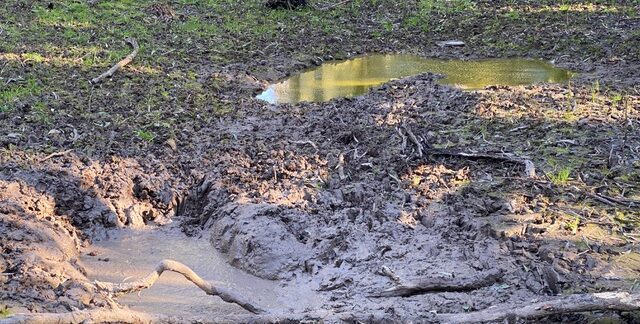




, By Yarra

It was only about decade ago that seeing a Sambar deer in the middle or lower Birrarung Parklands was a novelty. How things have changed!
Sambar deer became an environmental problem from about the 1980s when many small optimistic farmers in south eastern Australia saw venison as the meat of the future. Supply soon exceeded demand and some farmers just released their deer into the local forests. Damaged fencing also allowed stock to escape. These feral deer have now become a serious threat to the environment and its wildlife. The extensive bushfires of 2009 probably drove deer further down the Yarra Valley and they have been breeding up quickly since then. Yet in their Asian homeland, they are classified as “vulnerable” on the IUCN Red list. Excessive hunting and predators such as the tiger have contributed to this.
Sambar stags can weigh over 500 kgs and are thus a hazard on our roads. Given a choice, they will flee if disturbed, but aggression is possible if they feel threatened or cornered.
The pandemic lockdowns assisted their expansion into the Birrarung Parklands, as they sought peaceful sanctuary in the area’s deserted golf courses. Also, the massive North East Link works in Bulleen have discouraged visitation to the Bolin Bolin Billabong precinct, so it too has become a relatively peaceful haven for deer. Not only are they now frequently seen there, but their damage to the environment has become increasingly evident. Bolin Bolin has relatively steep banks which the deer use as escape routes, so several sections are now badly eroded by their hooves, potentially polluting the water and exposing tree roots. Areas where the water has receded are heavily pockmarked by their hooves, while the remnant timid wallaby population has declined in recent years. Several deer wallows in Bolin Bolin’s grasslands are quite evident, as well as in the muddy areas of the actual billabong. These deer will probably breed quickly, as they have elsewhere, so similar polluting damage is likely in other billabongs, as well as the steep banks of the Birrarung itself. One has to assume that this is something Melbourne Water would be keen to avoid.
It is urgent for Parks Victoria to find a way to eradicate feral deer before irreparable damage is done in these sensitive areas that are so culturally important to the Wurundjeri Woi-wurrung people.
Please report any deer sightings or their environmental damage via the www.feralscan.org.au website so that Parks Victoria gets a fuller understanding of this serious issue.
Graeme Daniels, July 2023